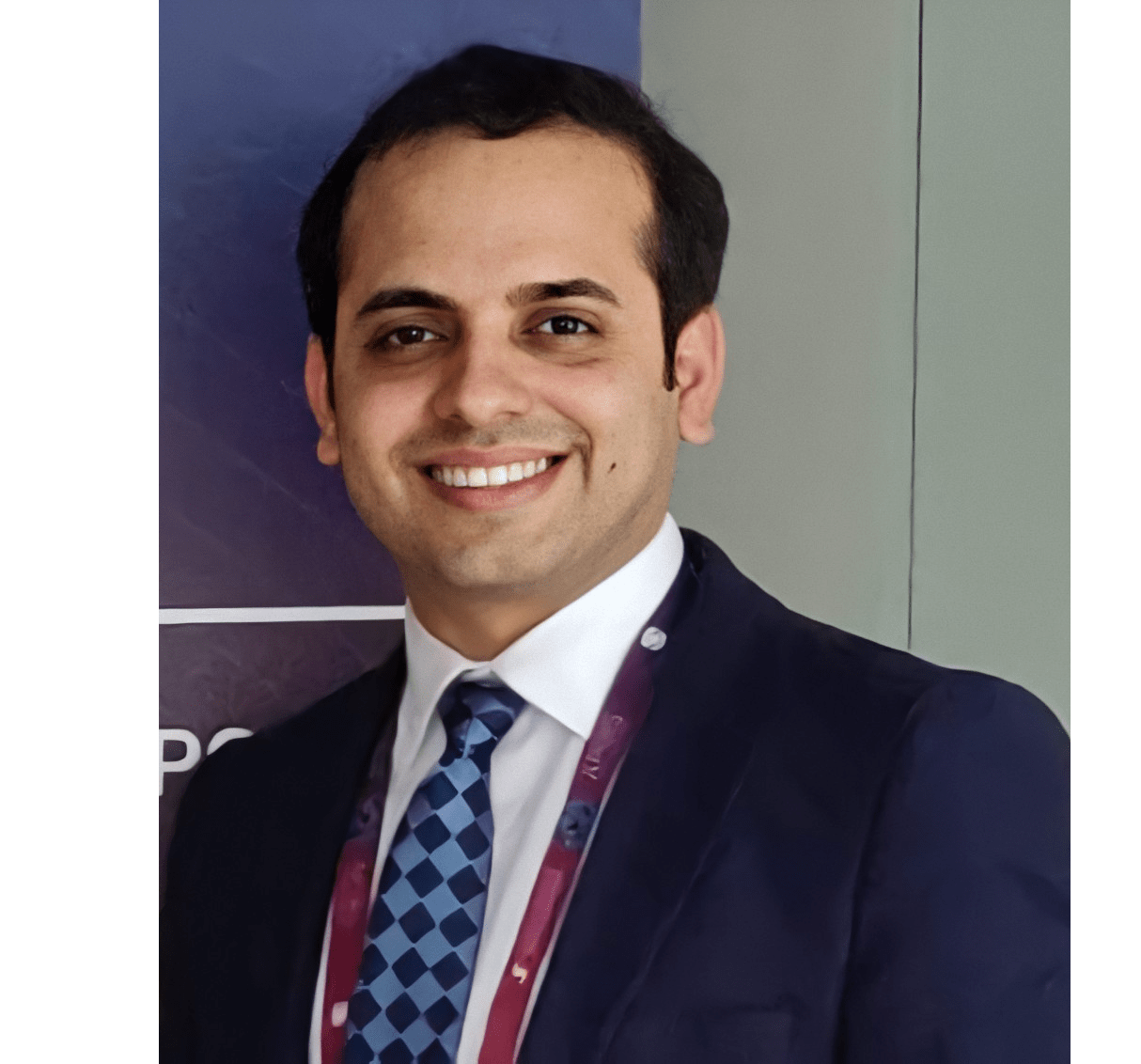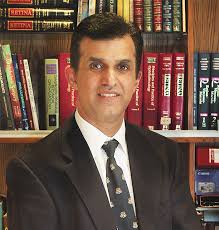At PIE, we’re sometimes known as the “shock jocks” of ophthalmic publishing — thanks to our funky style (in both fashion and medical reporting). So, we decided to try on those radio show shoes, with a segment of our own: the PIE Radio Show.
We asked renowned surgeons from around the world to chime in on some of the most important topics in ophthalmology today — from COVID-19’s impacts, to business decisions and innovations in medical and surgical retina. So, sit back, relax and don’t touch that dial . . . the PIE Radio Show is ON AIR!
Check out the PIE Radio Show online. Visit piemagazine.org to watch.
Featuring:
Dr. Diva Kant Misra — Lucknow, India
Vitreoretinal Consultant at Eye-Q Super Speciality Eye Hospital
Song Request: “Believer” by Imagine Dragons
Dr. Anil Arora — Sydney, Australia
Ophthalmic Surgeon for Central Coast Eye Specialists and Medical Director of the Laser
Vision Clinic Central Coast
Song Request: “I Can See Clearly Now” by Johnny Mathis
Dr. Kenneth Fong — Kuala Lumpur, Malaysia
Consultant Vitreoretinal Surgeon and Managing Director of OasisEye Specialists
Dr. Gemmy Cheung — Singapore
Deputy Head and Senior Consultant of Medical Retina at Singapore National Eye Centre (SNEC)
Dr. Chirag Shah — Boston, USA
Vitreoretinal Surgeon at Ophthalmic Consultants of Boston and Co-Director of the Tufts/OCB Vitreoretinal Surgery Fellowship
That’s enough, COVID-19
I don’t know about you, but we have coronavirus fatigue here at PIE. Unfortunately, until a vaccine is developed or the virus is somehow contained, it’s going to be hanging around — like an uninvited dinner guest. Worldwide, we are learning to live with it: People are making lifestyle changes to ensure their safety and that of others.
And not to sound like a broken record, but COVID-19 has undoubtedly affected ophthalmology — including patients, doctors, staff, clinics, hospitals, equipment and device companies . . . the list goes on. So, what’s happening now that practices are reopening and doctors are seeing patients again?
PIE: Have you noticed any patients with vision loss or disease progression following reopening from the pandemic due to missed treatment?
Dr. Diva Kant Misra: Yes, a lot of patients could not get immediate care for urgent retinal conditions like retinal detachment. In such patients, even minor delays can lead to a poorer visual prognosis. A few of my patients from other cities were able to reach me after considerable hardship and delay. Thankfully we were able to salvage these eyes, but I had a CRAO (central retinal artery occlusion) patient who came to me after one month, and by that time it was too late for him.
Dr. Anil Arora: I have, unfortunately, had four or five patients who have had worsening of their exudative macular degeneration because they have not kept their appointment for intravitreal anti-VEGF injections. Some patients have been too frightened to come out and some patients (who were residents of nursing homes) were told that if they left their premises, they would have to self-isolate for two weeks upon returning and they did not want to go through that. Fortunately, the decline in vision was not marked in any of these patients and hopefully vision will recover with resumption of regular treatment.
Dr. Kenneth Fong: Yes, there have been a few patients with AMD (age-related macular degeneration) who lost vision due to the lockdown as they were unable to attend the clinic for their usual injections.
Dr. Gemmy Cheung: During the month of May 2020, about 25% of patients who have active disease in our unit did not attend their appointments. When our team called up this group of patients, about 40% reported that the main reason for not attending their appointment was fear of getting infected. About 90% of patients reported their subjective vision is stable. For the 10% who reported subjective worsening, they agreed to attend the urgent appointment which we re-scheduled to evaluate their condition and reinstate their injections if indicated.
Dr. Chirag Shah: Unfortunately, two patients developed significant submacular hemorrhages and associated visual loss due to missed intravitreal anti-VEGF injections. Further, delayed macular hole surgeries resulted in larger macular holes and reduced visual potential after repair.
PIE: It’s unfortunate to hear that some patients have lost vision during lockdown. Do you think anything in ophthalmology will permanently change as a result of coronavirus?
Dr. Fong: The levels of hygiene will improve significantly in all health care institutions and this will benefit staff and patients in reducing the risk of infectious diseases. Within a few months, the whole world will be used to the idea of universal mask use and social distancing.
PIE: Right, so moving forward it seems like there will be extra caution . . . with everything.
Dr. Misra: We are switching to telemedicine, practicing social distancing — and most of all; we see and meet patients from behind the mask. This definitely is going to hamper the patient-doctor connection. It’s ironic that you may not even know the face of the person you trust your eye with. But such are the times, and such is life. We have to do the best with what we have.
Dr. Shah: Coronavirus will likely have many lasting effects on our field. Prior to coronavirus, private equity was spreading throughout ophthalmology practices in the United States, benefitting senior partners at the expense of junior and all future partners. What a stark contrast to the effects of our current pandemic. Now, with uncertainties in revenue and profitability of ophthalmology practices, as well as with volatility in public markets, we may witness a regression of private equity takeovers.
PIE: You’re right, the virus hasn’t only created safety concerns — it’s hit all aspects of the business . . .
Dr. Shah: Yes, and with regard to changes in individual practice, it is possible that those who can work remotely, like administrative assistants and call center staff will continue to do so. Telehealth might also become part of the fabric, particularly for external disease. Sadly, I think many of us will have to retire our tie collection, as ties can serve as a fomite for infectious diseases. Same goes for white coats.
Dr. Anil Arora: I don’t think that anything will change permanently. There will be temporary changes, as are already taking place, which will continue — such as the wearing of masks and goggles; having shields and screens over slit-lamps; reducing clinic bookings; reducing the number of chairs in the waiting room (to keep waiting rooms less crowded); and sanitizing hands and equipment between patients. As restrictions ease, and hopefully as the disease is contained, I think there will be a tendency for things to return to how they were pre-coronavirus.
PIE: These are all valid points — and it will be interesting to see how the lasting effects of COVID-19 play out in ophthalmology. Speaking of the pandemic, are there any questions about it that you’re tired of answering?
Dr. Fong: None, as the situation seems to change weekly, my answers to the same questions are also changing weekly. For example: risk of infection spread caused by aerosolization during cataract surgery; the PPE requirements are not clear yet so I am wearing an N95 mask for all my surgeries, but I do not use a face shield or cover the surgical field excessively.
Dr. Misra: People keep asking about the “new normal.” I am as clueless as anyone else. These are unprecedented times and it will be very difficult to predict how the situation will further develop.
Dr. Shah: None.
Dr. Arora: There is one question and one comment that I have heard frequently that has become a little tiresome. The question is: “When will there be a vaccine for coronavirus?” Everyone seems to have an opinion on this, with projections ranging from later this year to never. I have no idea when there will be a vaccine. There is still no vaccine for HIV or hepatitis-C, so it may be that there will never be a vaccine for COVID-19.
The comment that is tiring after some time is: “Things will never be the same again.” I think that there is always a tendency for people to return to old habits and once restrictions ease — and particularly as domestic and international travel resumes — things will be the same as they were before.
The two things that the coronavirus restrictions have taught me is that we can all do with less than we think, and that we need to respect Mother Nature. I tend to view viral pandemics as nature’s way of trying to restore the balance when one species becomes too powerful and disrupts that balance. I hope that I and others will continue to remember this as life returns to normal.
Show me the money: business decisions
In addition to affecting patients and individual practices, the pandemic has also hit the industry’s ophthalmic device and equipment companies — many of whom, like small and medium-sized enterprises (SMEs), may be struggling to stay afloat as demand dries up.
PIE: Are you, or is your clinic/hospital planning to purchase any new equipment or devices in 2020? In 2021? And if so, what?
Dr. Misra: All planned purchases have been stalled for the moment. We are evaluating the rapidly changing scenario and will reconsider those purchase decisions after everything stabilizes.
Dr. Arora: We have recently upgraded to the ZEISS CIRRUS 6000 model of optical coherence tomography (OCT). We have purchased two of these and are particularly enjoying the rapid image acquisition speed, along with several other new features. We are also looking at purchasing the CLARUS widefield fundus imaging system (from ZEISS) in the coming year.
Dr. Fong: No, due to a reduction in workload caused by the pandemic and lack of budget.
Dr. Shah: My practice bought scrubs for all of the staff in an effort to provide clothing that would be washed after a day of work to minimize the spread of coronavirus. They also plan to buy an intense pulsed light (IPL) laser for dry eye treatment.
Vitreoretinal hits: what’s topping the charts?

Moving on, technology and treatments for posterior segment conditions are constantly evolving. Let’s talk about that. . .
PIE: Are there any innovations in the development pipeline that you’re following closely in surgical? In medical?
Dr. Misra: I am closely observing the developments in the field of bionic eyes and related research.
Dr. Fong: 3D visualization systems will be helpful as they will not require surgeons to be so close to the surgical field — and they could also potentially reduce occupational related neck and back pain.
Dr. Arora: In medical, I am looking forward to seeing the introduction of brolucizumab (Beovu; Novartis, Basel, Switzerland) in Australia for the treatment of exudative age-related macular degeneration (AMD). I have not used it myself, but if it can reduce the frequency of intravitreal injections from monthly — as is typically the case now — to every three to four months as the company claims, it will greatly reduce the burden of treatment for ophthalmologists . . . and hopefully, reduce the massive cost that intravitreal injections have on the health system in many countries.
I am aware of reports and concerns about it [Beovu] producing occlusive retinal vasculitis. These have occurred in the U.S. following approval of the drug for wet AMD and were not present (or at least not with anywhere near the same frequency) in the clinical trials preceding approval. There may be an immune response and apparently some treatment naive patients have antibodies to Beovu. The company is addressing these concerns and hopefully, if they are resolved, we will have a new medication in our arsenal to manage AMD more effectively.
In surgical, having become comfortable with 25-gauge vitrectomy for almost all vitreoretinal procedures, I look forward to making the transition to 27-gauge vitreoretinal surgery in the near future. It is amazing to think that we can do vitreoretinal surgery and procedures such as laser photocoagulation, silicone oil injection and membrane peeling, through openings that are the same size as a needle used by diabetics to administer insulin.
Dr. Shah: Stem cell transplantation for atrophic AMD is always an intriguing topic to help stabilize — or even restore some vision — in patients with a presently blinding condition. If approved, I do wonder how operating rooms will be able to accommodate the surgical volume if transplantation requires vitrectomy with subretinal delivery.
PIE: Indeed, these new treatments and devices certainly sound both interesting and promising. Building on that, what do you think is the most important topic in vitreoretina today? Or is there a topic that you feel deserves more attention?
Dr. Arora: I’m not sure I can single out one topic as being the most important. I think if you ask 10 different ophthalmologists you may get 10 different answers. Perhaps the condition that is most in need of a treatment is dry (or atrophic) AMD. While we now have a variety of intravitreal agents for wet AMD, there are still no really good answers for the dry form.
Dr. Fong: We need longer acting drugs or depot devices to deliver treatments for AMD, diabetic macular edema (DME) and retinal vein occlusion (RVO). The pandemic has shown that we need to reduce our retina patient visits without compromising on their vision. Current anti-VEGF agents only allow, at most, three monthly intervals between visits for a small number of patients. Most patients still need to come back monthly.
Dr. Misra: I feel the role of artificial intelligence in battling diabetic retinopathy blindness will be a game changer in a country like India.
Dr. Shah: At the moment, it is most imperative to keep our elderly, the most vulnerable patients, safe in our offices. This requires careful consideration of all the steps patients take during a typical office visit so that we can maximize the efficiency of the visit to minimize risks associated with patients congregating in the waiting room. This may also require a reevaluation of the patient scheduling, possibly stretching out the day and reducing the number of patients per hour.
PIE: It sounds promising that there are some devices and treatments in the R&D pipeline to address some of these sight-threatening retinal diseases. Furthermore, as the pandemic continues, it’s clear that continued vigilance will be required to not only keep patients safe, but to keep businesses running.
Well, looks like we’re out of time . . . we appreciate all the “callers” who “phoned-in” to the inaugural PIE Radio Show. Until next time…
Editor’s Note: Answers to these questions were submitted via email by the surgeons interviewed. Responses have been edited for length and clarity, and edited into a Radio Show transcript. And while the PIE Radio Show did not occur in real time, the answers are real.








